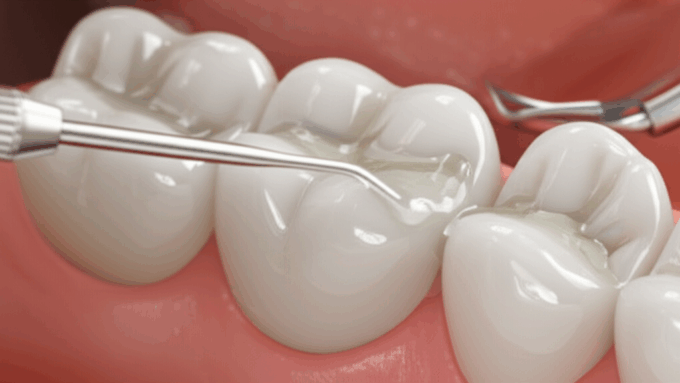Dental sealants are a remarkable innovation in preventive dentistry, offering a simple yet highly effective way to shield your teeth from the persistent threat of cavities. These thin, protective coatings are applied to the chewing surfaces of your back teeth, where the natural grooves and pits can easily trap food particles and bacteria. Understanding what dental sealants are, how they work, and their benefits can empower you to make informed decisions about your oral health and that of your family.
At its core, a dental sealant acts as a physical barrier, creating a smooth surface that prevents acids produced by plaque bacteria from reaching and eroding tooth enamel. The chewing surfaces of molars and premolars are particularly susceptible to decay due to their complex topography. These intricate fissures and grooves are notoriously difficult to clean thoroughly with a toothbrush, providing a haven for microscopic enemies of oral health. Dental sealants effectively “seal off” these vulnerable areas, forming a protective shield that makes it much harder for food debris and cavity-causing bacteria to take hold.
The procedure for applying dental sealants is remarkably straightforward and painless, making it an ideal preventive measure for both children and adults. It typically involves a few simple steps. First, the dental professional will thoroughly clean and dry the tooth to be sealed. Next, a mild etching solution is applied to the surface of the tooth for a short period. This etching process gently roughens the enamel, creating a microscopic landscape that the sealant can adhere to securely. After rinsing off the etching solution and drying the tooth again, the liquid sealant material is painted onto the chewing surface. This material then hardens, often with the aid of a special curing light, creating the durable protective barrier. The entire process usually takes only a few minutes per tooth, and there is no drilling or discomfort involved.
The Enduring Benefits of Dental Sealants
The advantages of choosing dental sealants are numerous and far-reaching. Foremost among them is the significant reduction in the risk of developing cavities, particularly in the grooves of the back teeth. Studies have consistently shown that sealed teeth have a substantially lower incidence of decay compared to unsealed teeth. This preventive approach can save you from the discomfort, cost, and potential long-term complications associated with fillings and other restorative dental treatments.
Furthermore, dental sealants offer long-term protection. While they are not permanent and may need reapplication over time, they can remain effective for several years. Regular dental check-ups are important to monitor the integrity of the sealants and to reapply them if they become worn or chipped. This proactive approach to oral hygiene ensures that the protective barrier remains intact and continues to guard against decay.
For parents, dental sealants are an invaluable tool in safeguarding their children’s developing smiles. Young children often struggle with mastering proper brushing techniques, making their newly erupted molars particularly vulnerable to cavities. Applying dental sealants shortly after these permanent teeth come in can establish a strong foundation for lifelong oral health. It’s a simple, cost-effective way to prevent pain and promote good habits.
Durability and Maintenance of Dental Sealants
While incredibly effective, it’s important to understand that dental sealants are not indestructible. They are designed to withstand the normal forces of chewing. However, very hard or sticky foods, or habits like chewing on ice or pens, can potentially chip or wear down the sealant over time. This is why regular dental examinations are crucial. Your dentist can easily check the condition of your sealants and address any areas of concern. In most cases, a sealant can be repaired or reapplied with minimal effort.
The dental professional will work with you to determine if sealants are a good option for your individual needs. Factors such as your current risk for cavities, your oral hygiene habits, and the condition of your teeth will be considered. If you have deep grooves or pits that are difficult to keep clean, or if you have a history of decay, sealants might be highly recommended.
Beyond Children: Adult Applications of Dental Sealants
While often associated with pediatric dentistry, the benefits of dental sealants extend to adults as well. Individuals of any age who have a higher risk of developing cavities, particularly in their molars and premolars, can benefit from this protective measure. This includes adults with particularly deep tooth grooves, those who have difficulty maintaining good oral hygiene, or individuals with medical conditions that affect oral health. In situations where a tooth is deemed healthy but at risk, sealants can offer a proactive shield.
In conclusion, dental sealants represent a cornerstone of modern preventive dentistry. They offer a simple, painless, and highly effective method for drastically reducing the risk of cavities on the chewing surfaces of teeth. By understanding the mechanism, the application process, and the benefits, individuals and families can embrace this excellent strategy to maintain healthy smiles and avoid the pain and expense of dental decay. Discussing dental sealants with your dentist is a proactive step towards ensuring



